
Cebu City: The Queen City of the South
Discover Cebu City: A blend of history, culture, and natural beauty, offering everything from historic landmarks to stunning beaches and vibrant nightlife.
Cebu City, known as the Queen City of the South, is a bustling metropolis brimming with rich history, vibrant culture, and natural beauty. Located in the Central Visayas region of the Philippines, it serves as a gateway to some of the country's most stunning islands and beaches. The city itself is a blend of modernity and tradition, with towering skyscrapers standing alongside centuries-old churches and colonial structures. One of the city's most iconic landmarks is the Magellan's Cross, which marks the spot where Portuguese explorer Ferdinand Magellan planted a wooden cross in 1521, signifying the arrival of Christianity in the Philippines. Nearby is the Basilica Minore del Santo Niño, the oldest Roman Catholic church in the country, housing a revered statue of the Child Jesus. For nature lovers, Cebu City offers easy access to beautiful beaches, waterfalls, and hiking trails. Just a short drive away, you can explore the stunning Kawasan Falls or take a boat trip to neighboring islands like Mactan and Malapascua, famous for their crystal-clear waters and diverse marine life. The city also boasts a thriving food scene, with a variety of local dishes to try, such as the famous Cebu lechon (roast pig) and fresh seafood. Shopping enthusiasts will find plenty of options in Cebu City, from bustling street markets to modern malls like Ayala Center and SM City Cebu. The city's nightlife is equally vibrant, with numerous bars, clubs, and live music venues offering entertainment late into the night. Whether you're interested in history, nature, food, or simply soaking up the local culture, Cebu City has something to offer every traveler.
Local tips in Cebu City
- Visit Magellan's Cross and the Basilica Minore del Santo Niño early in the morning to avoid crowds.
- Wear comfortable shoes when exploring the city's historic sites, as you'll be doing a lot of walking.
- Try the local delicacies, especially the Cebu lechon. Ask locals for the best places to get it.
- For island hopping, book tours in advance to ensure availability and better rates.
- Stay hydrated and use sunscreen, as the tropical climate can be quite intense.
- Use Grab or local taxis for convenient and safe transportation within the city.
- Check out the Carbon Market for fresh produce and local goods, but keep an eye on your belongings.
- Visit the Temple of Leah for panoramic views of the city and beautiful architecture.
Neighbourhoods in Cebu City
Cebu City: The Queen City of the South
Cebu City, known as the Queen City of the South, is a bustling metropolis brimming with rich history, vibrant culture, and natural beauty. Located in the Central Visayas region of the Philippines, it serves as a gateway to some of the country's most stunning islands and beaches. The city itself is a blend of modernity and tradition, with towering skyscrapers standing alongside centuries-old churches and colonial structures. One of the city's most iconic landmarks is the Magellan's Cross, which marks the spot where Portuguese explorer Ferdinand Magellan planted a wooden cross in 1521, signifying the arrival of Christianity in the Philippines. Nearby is the Basilica Minore del Santo Niño, the oldest Roman Catholic church in the country, housing a revered statue of the Child Jesus. For nature lovers, Cebu City offers easy access to beautiful beaches, waterfalls, and hiking trails. Just a short drive away, you can explore the stunning Kawasan Falls or take a boat trip to neighboring islands like Mactan and Malapascua, famous for their crystal-clear waters and diverse marine life. The city also boasts a thriving food scene, with a variety of local dishes to try, such as the famous Cebu lechon (roast pig) and fresh seafood. Shopping enthusiasts will find plenty of options in Cebu City, from bustling street markets to modern malls like Ayala Center and SM City Cebu. The city's nightlife is equally vibrant, with numerous bars, clubs, and live music venues offering entertainment late into the night. Whether you're interested in history, nature, food, or simply soaking up the local culture, Cebu City has something to offer every traveler.
When is the best time to go to Cebu City?
Iconic landmarks you can’t miss
Magellan's Cross
Discover the historic Magellan's Cross in Cebu City, a significant symbol of Christianity's arrival in the Philippines, surrounded by vibrant culture.
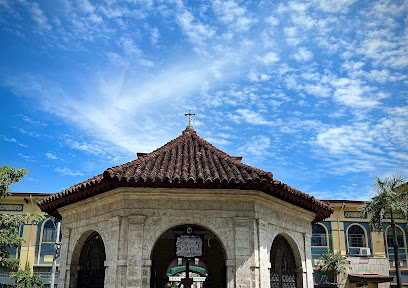
Temple of Leah
Discover the grandeur of the Temple of Leah in Cebu, a stunning tribute to love and devotion, surrounded by breathtaking views and rich cultural heritage.
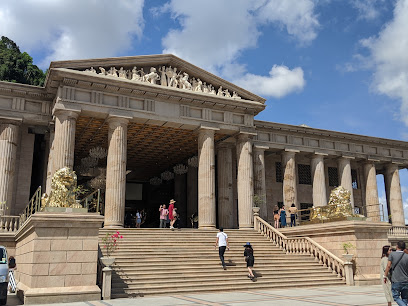
Minor Basilica of the Holy Child of Cebu (Basilica Minore Del Sto. Niño de Cebu)
Explore the Minor Basilica of the Holy Child, the oldest Catholic church in the Philippines, a must-visit for spiritual seekers and history enthusiasts alike.

Fort San Pedro
Discover the rich history and stunning views at Fort San Pedro, Cebu's oldest fortress and a must-visit tourist attraction.

Sugbo Mercado - IT Park
Discover the vibrant flavors of Cebu at Sugbo Mercado - a food court where culinary dreams come true in a lively atmosphere.
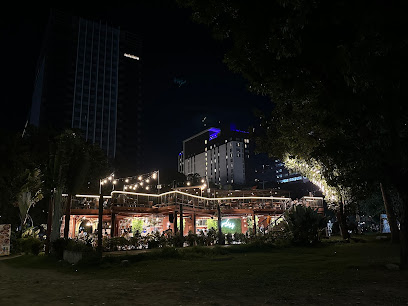
TOPS Cebu
Discover stunning panoramic views of Cebu City and Mactan Island at TOPS Cebu, the ultimate observation deck for breathtaking experiences.
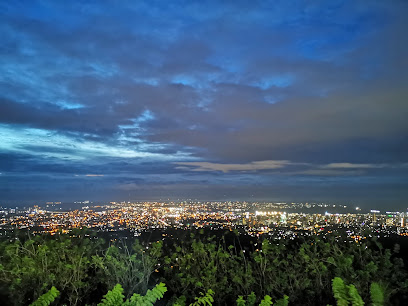
Cebu City Sports Center
Discover the vibrant Cebu City Sports Center, a premier destination for sports enthusiasts and a cultural hub in the heart of Cebu City.
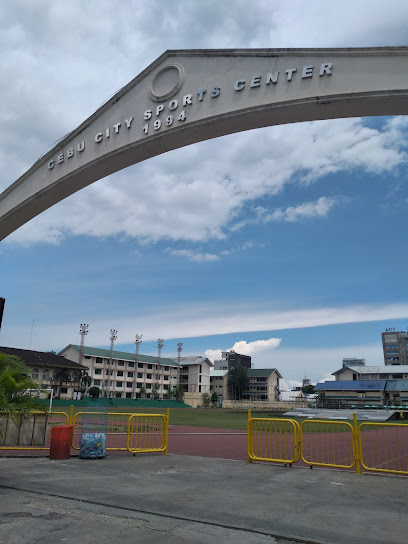
Cebu Metropolitan Cathedral
Explore the Cebu Metropolitan Cathedral, an iconic landmark that embodies the rich history and spiritual essence of Cebu City.

Sirao Garden
Explore the captivating beauty of Sirao Garden, Cebu's vibrant floral oasis, perfect for nature lovers and photography enthusiasts.
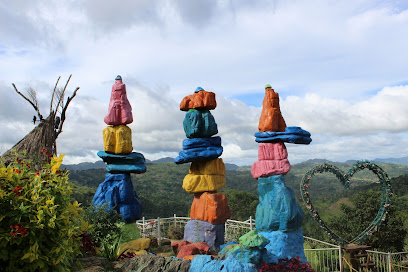
Yap-San Diego Ancestral House
Explore the historic Yap-San Diego Ancestral House in Cebu City, a cultural gem showcasing traditional Filipino architecture and rich heritage.
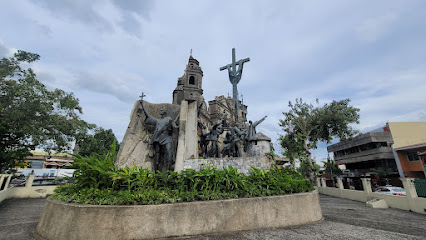
Cebu Taoist Temple
Discover the spiritual serenity and vibrant architecture of Cebu Taoist Temple, a cultural gem in the heart of Cebu City.
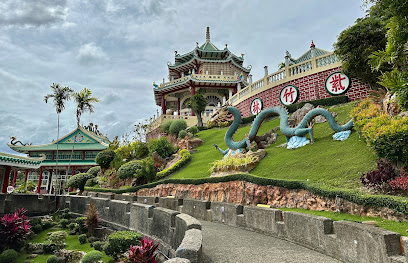
Plaza Independencia
Discover the historic Plaza Independencia in Cebu City, a beautiful park celebrating freedom and Filipino heritage amidst lush landscapes.

Magellan's Marker
Explore the historic Magellan's Marker in Lapu-Lapu City, a landmark celebrating the arrival of Ferdinand Magellan and rich Philippine heritage.
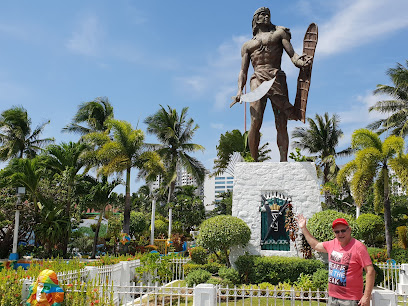
Buwakan ni Alejandra
Discover the vibrant beauty of Buwakan ni Alejandra, a floral haven in Balamban, Cebu, perfect for nature lovers and photography enthusiasts.
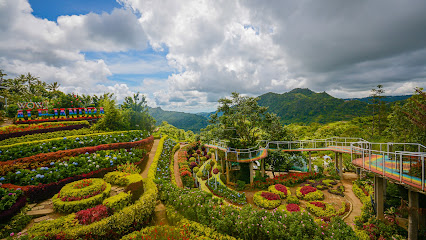
Casa Gorordo Museum
Explore the historical richness of Cebu at Casa Gorordo Museum, where the past comes alive through captivating exhibits and stunning architecture.
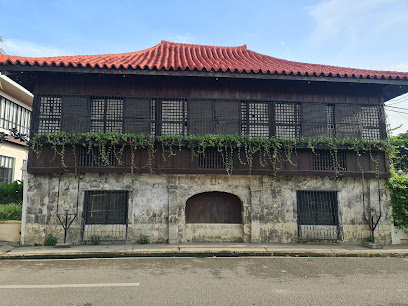
Unmissable attractions to see
Bluewater Maribago Beach Resort
Discover the serene beauty and luxurious amenities of Bluewater Maribago Beach Resort, your ultimate getaway on Mactan Island in the Philippines.

Minor Basilica of the Holy Child of Cebu
Discover the spiritual heart of Cebu at the Minor Basilica of the Holy Child, a historic site rich in culture and tradition.

Fort San Pedro
Discover the historical significance and beauty of Fort San Pedro, Cebu's oldest fort and a key landmark in Philippine history.

Carbon Market
Discover the vibrant essence of Cebu at Carbon Market, where local culture, fresh produce, and delightful flavors come together in a lively atmosphere.
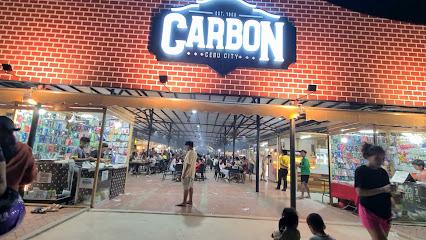
TOPS Cebu
Discover the breathtaking views and serene atmosphere of Tops Cebu, the ultimate observation deck for panoramic sunsets and cityscapes.
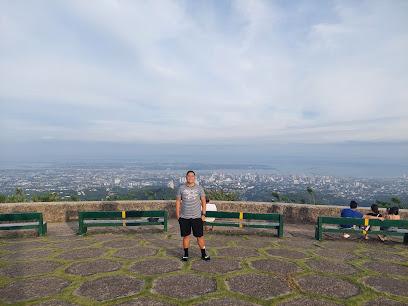
The Mactan Newtown Beach
Discover the serene beauty of The Mactan Newtown Beach, a tropical paradise in Lapu-Lapu City, Cebu, perfect for relaxation and adventure.

Cebu Ocean Park
Explore the wonders of marine life at Cebu Ocean Park, a captivating aquarium and wildlife park in Cebu City, Philippines.

Cebu Safari and Adventure Park
Experience the thrill of wildlife at Cebu Safari and Adventure Park, an enchanting destination for nature lovers and adventure seekers in Cebu, Philippines.
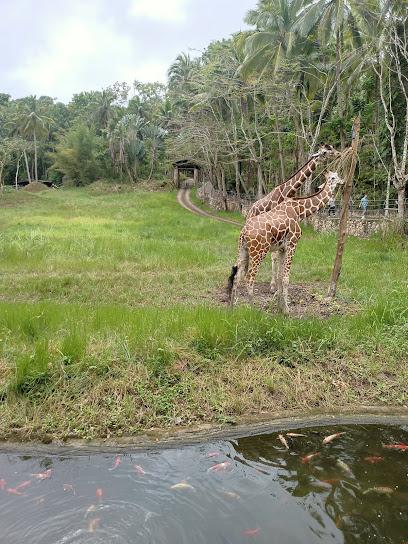
Simala Parish Church
Discover the architectural splendor and spiritual significance of Simala Parish Church in Cebu, a must-visit destination for every traveler.
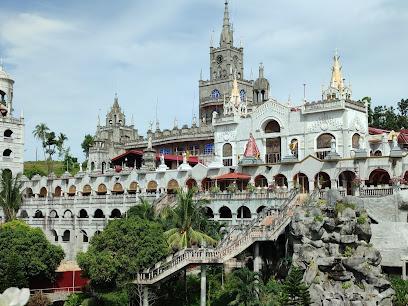
Cebu Metropolitan Cathedral
Explore the Cebu Metropolitan Cathedral, a stunning architectural gem and cultural landmark in Cebu City, rich in history and spirituality.
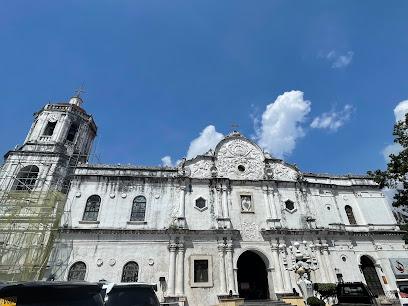
Cebu
Discover the vibrant culture, stunning beaches, and rich history of Cebu, the Queen City of the South in the Philippines.
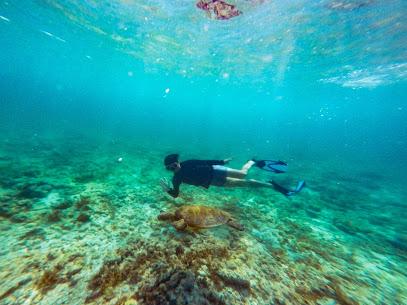
Yap-San Diego Ancestral House
Explore the Yap-San Diego Ancestral House, a historical landmark in Cebu City showcasing traditional Filipino architecture and rich cultural heritage.

Cebu Taoist Temple
Discover the tranquility and architectural beauty of Cebu Taoist Temple, a cultural gem that offers a peaceful retreat amid the vibrant city life.
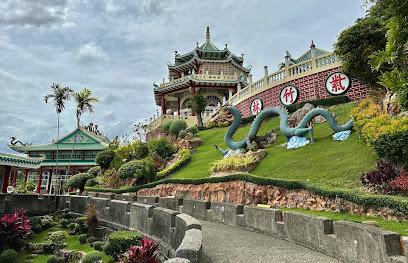
Buwakan ni Alejandra
Explore the vibrant beauty of Buwakan ni Alejandra, a floral gem in Cebu, perfect for nature lovers and photography enthusiasts.
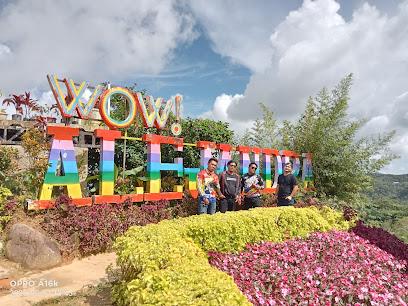
Casa Gorordo Museum
Discover the rich history of Cebu at Casa Gorordo Museum, a beautifully preserved historical landmark showcasing Filipino heritage.

Essential places to dine
Vikings Luxury Buffet
Experience an extravagant culinary journey at Vikings Luxury Buffet in Cebu City – where flavors from around the world come together.
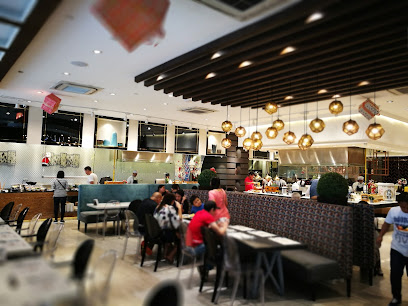
La Vie Parisienne
Discover the charm of French cuisine blended with Filipino flair at La Vie Parisienne in Cebu City.
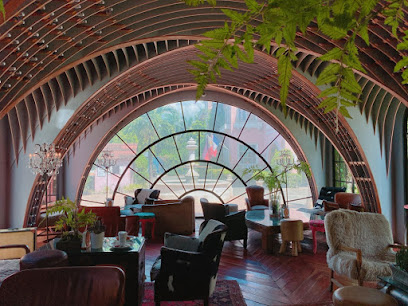
House of Lechon
Experience the best lechon in Cebu City at House of Lechon – a culinary haven showcasing authentic Filipino flavors.
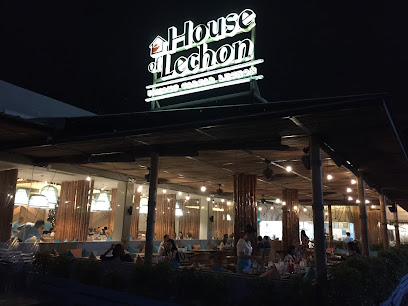
TGI FRIDAYS
Savor American favorites in the lively ambiance of TGI Fridays at The Terraces Ayala Center Cebu.
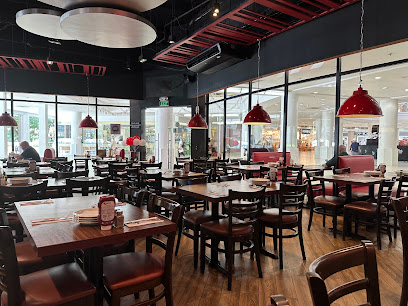
Top of Cebu
Top of Cebu: A Culinary Destination Offering Stunning Views and Delectable Dishes in the Heart of Cebu City.
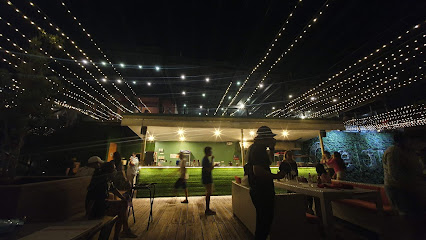
La Parisienne Sky
Experience breathtaking views and exquisite cuisine at La Parisienne Sky in Cebu City—where every meal is a feast for the senses.
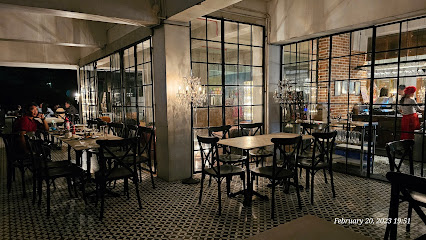
Lantaw Il Corso
Experience the best of Filipino cuisine at Lantaw Il Corso in Talisay - where every dish tells a story amidst stunning coastal views.
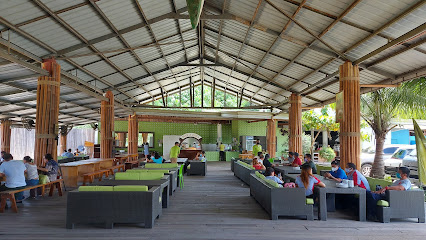
Tong Yang - SM Seaside City Cebu
Experience a culinary adventure at Tong Yang - SM Seaside City Cebu with diverse buffets featuring local and international flavors.
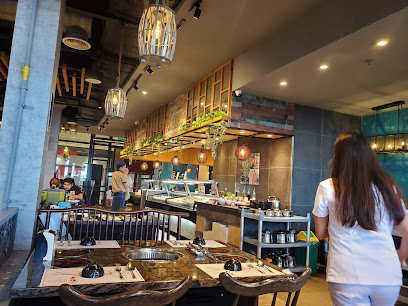
Casa Verde
Discover Casa Verde in Cebu City: A culinary haven serving delightful local and international dishes in a warm and welcoming atmosphere.
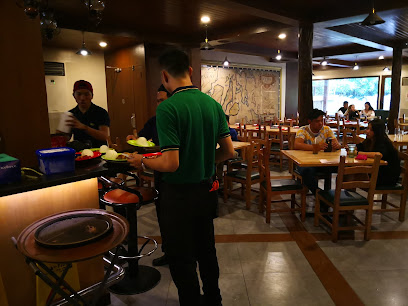
Acacia Steakhouse
Experience the ultimate steak dining at Acacia Steakhouse in Cebu City—where culinary excellence meets inviting ambiance.
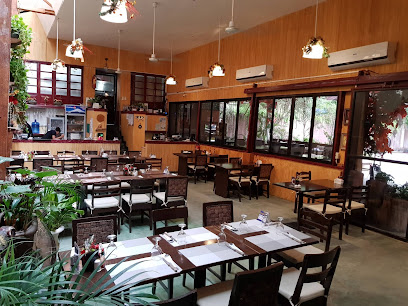
STK ta Bay!
Experience fresh seafood delights at STK ta Bay! in Cebu City – where tradition meets flavor in every dish.
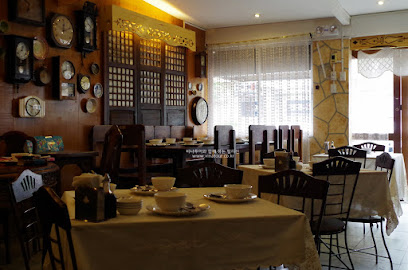
Mr. A Bar & Restaurant
Experience stunning views and exceptional cuisine at Mr. A Bar & Restaurant in Cebu City, blending local flavors with international flair.

The Social
Experience the lively atmosphere at The Social, where Australian flavors meet local charm in the heart of Ayala Mall Cebu.
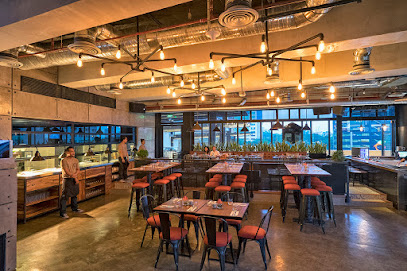
Parilya
Experience authentic Filipino flavors at Parilya – a coastal dining haven offering fresh seafood and grilled delights in Cebu.
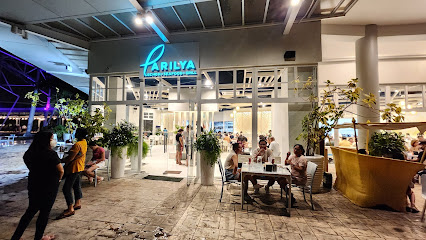
The Pig and Palm
Discover the innovative flavors of The Pig and Palm in Cebu City - where local ingredients meet modern culinary artistry.
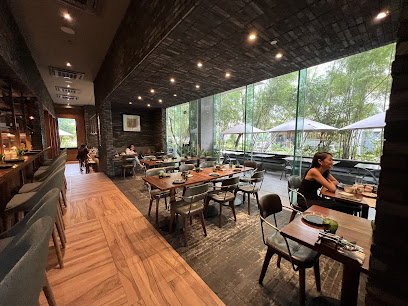
Markets, malls and hidden boutiques
Ayala Center Cebu
Explore the vibrant Ayala Center Cebu, a shopping paradise with diverse retail, dining, and entertainment options in the heart of Cebu City.
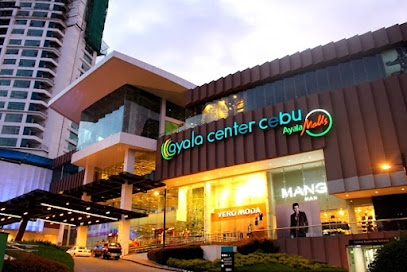
SM Seaside City Cebu
Experience the best of shopping, dining, and entertainment at SM Seaside City Cebu, a premier destination blending modern flair with local charm.
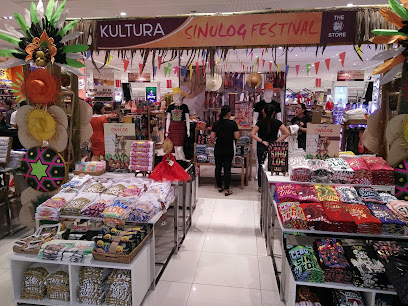
Carbon Market
Experience the essence of Cebu City at Carbon Market, where vibrant culture meets local flavors in a bustling atmosphere.
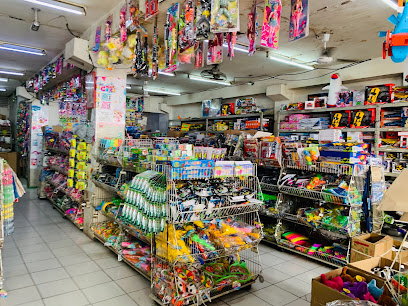
Taboan Public Market
Discover the vibrant Taboan Public Market in Cebu City, a treasure trove of local flavors, fresh produce, and unique crafts.
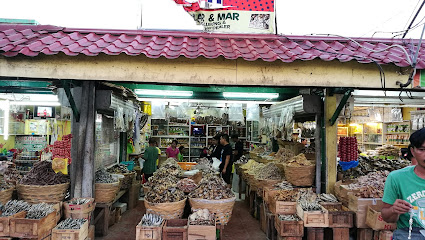
SM City Consolacion
Experience shopping, dining, and entertainment at SM City Consolacion, Cebu's premier shopping destination.
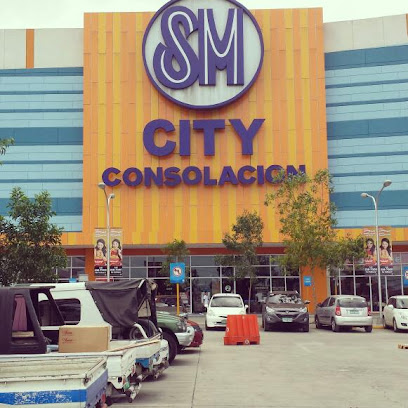
JY Square Mall
Experience shopping, dining, and entertainment at JY Square Mall, the vibrant heart of Cebu City's retail scene.
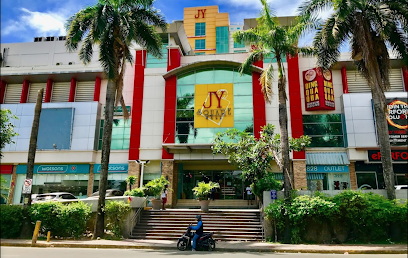
Metro
Explore the vibrant Metro Department Store in Cebu City for a unique shopping experience, where local culture meets modern convenience.
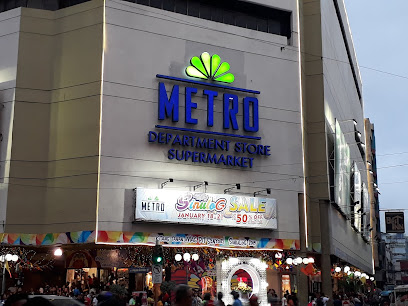
Unitop - Cebu City
Explore Unitop in Cebu City for a diverse shopping experience featuring groceries, home goods, and affordable prices in a welcoming atmosphere.
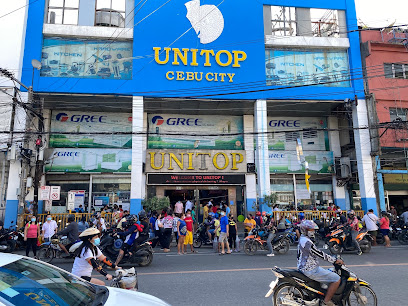
Shamrock Pasalubong Center
Experience the best of Cebu's baked delights at Shamrock Pasalubong Center, where every bite tells a story of local flavor and tradition.
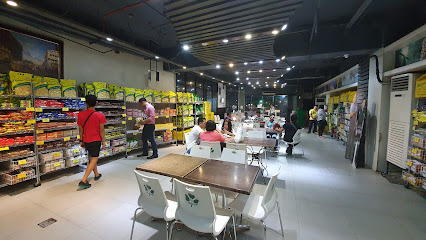
SM Store Cebu
Discover the ultimate shopping experience at SM Store Cebu, where a world of fashion, gadgets, and local treasures awaits.
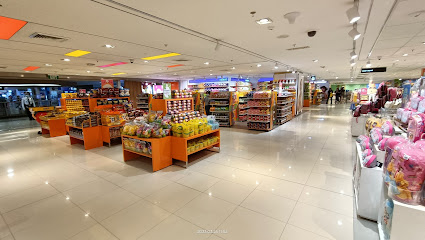
SM Store - SM City Cebu
Explore the diverse offerings of SM Store at SM City Cebu, where shopping meets local culture in a vibrant atmosphere.
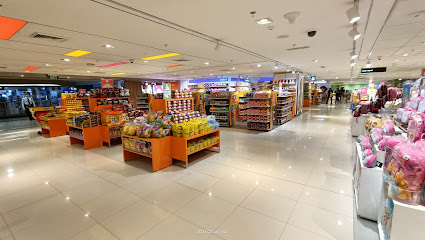
Golden FUS Shopping Mall
Explore Golden FUS Shopping Mall in Cebu City for an unforgettable shopping experience filled with local flavors, entertainment, and unique finds.
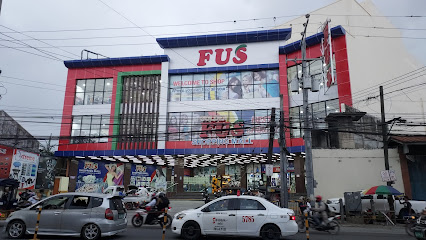
UNIQLO SM City Cebu
Discover stylish, affordable fashion at UNIQLO SM City Cebu – where modern design meets quality craftsmanship.
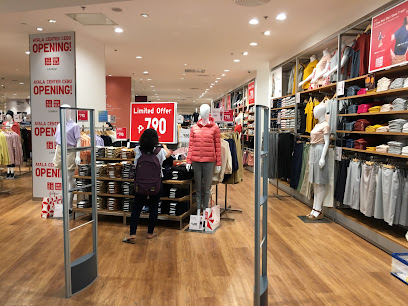
Pink Bunny Cebu - Sex Toys Shop
Explore a world of intimacy and pleasure at Pink Bunny Cebu, the premier adult entertainment store in the heart of Cebu City.
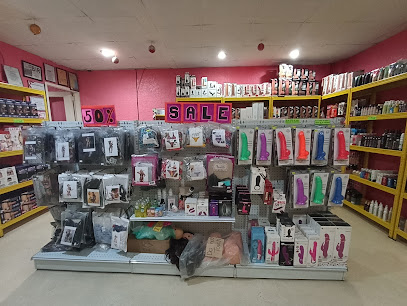
UNIQLO SM Seaside City Cebu
Explore stylish and comfortable clothing options at UNIQLO SM Seaside City Cebu, your ultimate fashion destination in the Philippines.
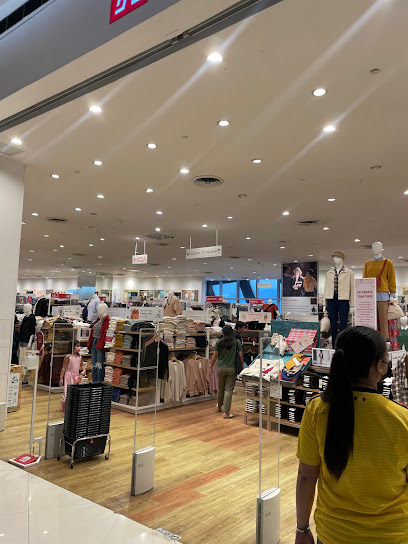
Essential bars & hidden hideouts
Cubana
Experience the rhythm of Cebu City at Cubana, a lively live music bar offering local flavors and electrifying performances.
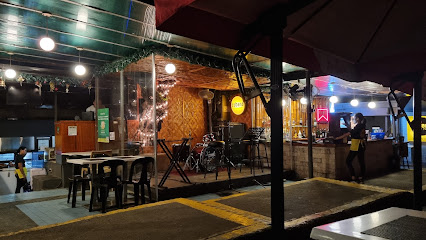
The Social
Discover a vibrant fusion of Australian flavors and classic pub cuisine at The Social in Cebu's Ayala Mall, perfect for all occasions.
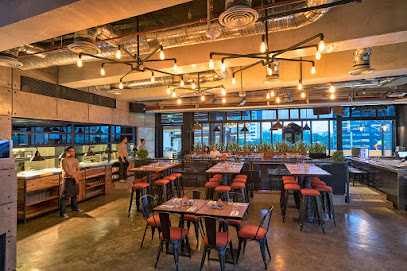
Blu Bar & Grill
Experience a culinary journey at Blu Bar & Grill, where stunning views meet exceptional grilled delicacies in Cebu City.
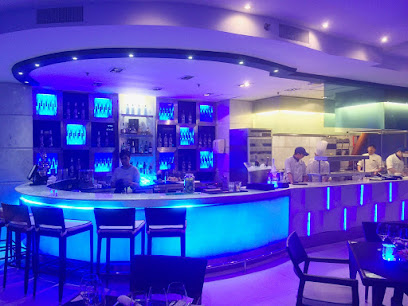
League Sports Bar
Discover Cebu City's vibrant nightlife with sports, drinks, and fun at League Sports Bar, where excitement meets a lively atmosphere.
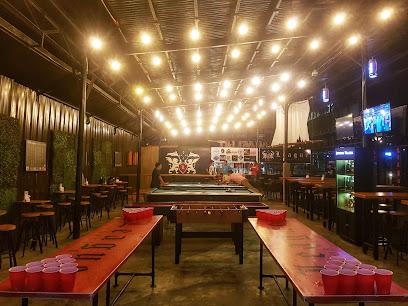
Verified Rooftop Bar & Lounge
Experience breathtaking views and vibrant nightlife at Cebu City's premier rooftop bar and lounge, offering an exquisite selection of drinks and ambiance.
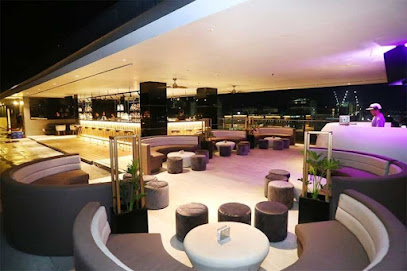
Howling Dogs Sports Grill
Experience the vibrant nightlife of Cebu City at Howling Dogs Sports Grill, where delicious food meets thrilling sports entertainment.
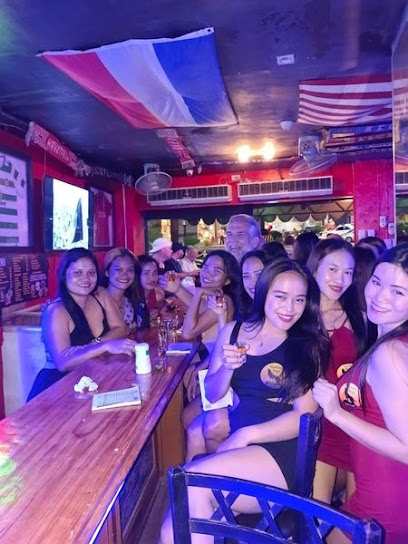
F Cafe and Bar
Experience the vibrant nightlife at F Cafe and Bar in Cebu City, where great drinks and lively music create an unforgettable atmosphere.
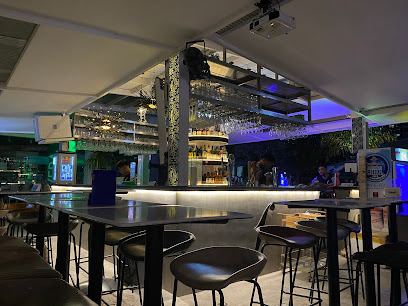
Bamboozers Bar
Experience the vibrant nightlife at Bamboozers Bar, Cebu City’s premier destination for live music and unforgettable evenings filled with fun.
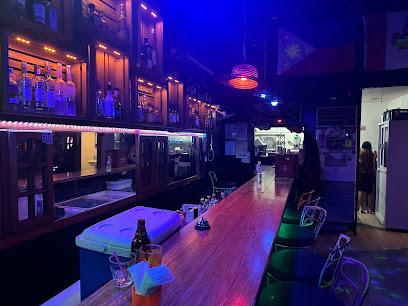
The Philly
Discover the ultimate dining and nightlife experience at The Philly in Cebu City, where great food meets vibrant entertainment every night.
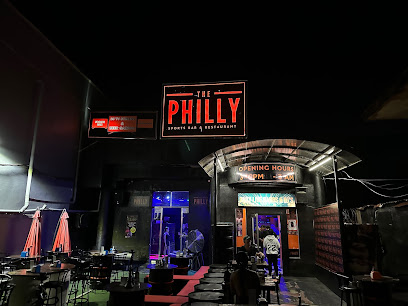
EULAX PUB
Discover the lively EULAX PUB in Cebu City, where great drinks and an energetic atmosphere await every night of the week.
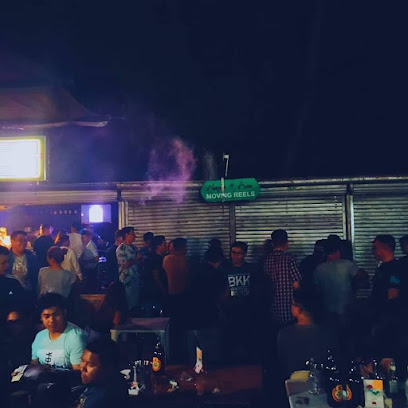
G-SPOT Bar
Experience the vibrant nightlife at G-SPOT Bar in Cebu City, where great drinks and an energetic atmosphere await.

El Gecko Resto Bar
Experience the vibrant atmosphere and local flavors at El Gecko Resto Bar in Cebu City, your go-to spot for delicious food and refreshing drinks.
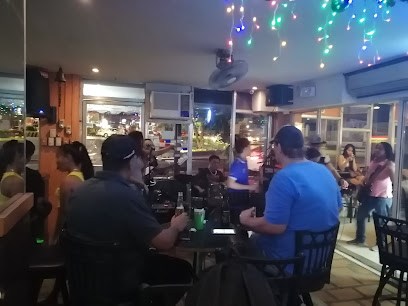
The Distillery Cebu
Experience the vibrant nightlife of Cebu at The Distillery, where crafted cocktails and lively ambiance await every night.
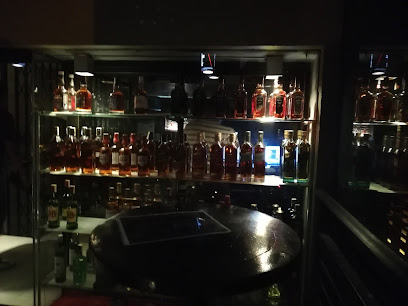
Trademark Bar, Best Hip-Hop Club, Cebu
Discover the vibrant nightlife of Cebu at Trademark Bar, the ultimate hip-hop club with electrifying music and an unforgettable atmosphere.

Straight Up Rooftop Bar at Seda Central Bloc Cebu
Discover Cebu's nightlife from above at the Straight Up Rooftop Bar, where stunning views and a vibrant atmosphere await every visitor.
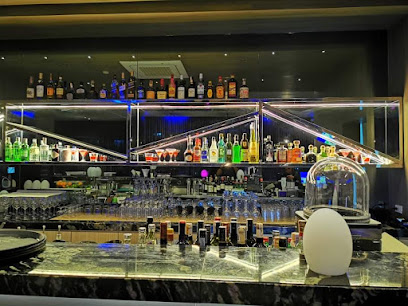
Local Phrases
-
- HelloKumusta
[koo-moo-sta] - GoodbyeSige, bye
[see-geh, bye] - YesOo
[oh-oh] - NoDili
[dee-lee] - Please/You're welcomePalihug
[pah-lee-hoog] - Thank youSalamat
[sa-la-mat] - Excuse me/SorryPasayloa ko
[pah-sa-yloa-ko] - How are you?Kamusta ka?
[kah-moo-stah-kah] - Fine. And you?Maayo. Ikaw?
[mah-yoh. ee-kaw] - Do you speak English?Kahibaw ka og English?
[kah-hee-bao-kah-ohg-English] - I don't understandDili ko kasabot
[dee-lee-koh-kah-sa-bot]
- HelloKumusta
-
- I'd like to see the menu, pleaseGusto ko makakita sa menu, palihug
[goo-stoh-koh-mah-kah-kee-tah-sah-meh-noo-pah-lee-hoog] - I don't eat meatDili ko kaon ug karne
[dee-lee-koh-kah-ohn-oog-kar-neh] - Cheers!Tagay!
[tah-gai] - I would like to pay, pleaseGusto nako magbayad, palihug
[goo-stoh-nah-koh-mahg-bah-yad-pah-lee-hoog]
- I'd like to see the menu, pleaseGusto ko makakita sa menu, palihug
-
- Help!Tabang!
[tah-bahng] - Go away!Lakaw!
[lah-kahw] - Call the Police!Tawagi ang Police!
[tah-wah-gee-ah-ng-poh-lee-say] - Call a doctor!Tawagi og doctor!
[tah-wah-gee-ohg-dohk-tor] - I'm lostNalimot ko
[nah-lee-moht-koh] - I'm illSakit ko
[sah-keet-koh]
- Help!Tabang!
-
- I'd like to buy...Gusto ko molit-ag...
[goo-stoh-koh-moh-lee-tahg] - I'm just lookingNagtan-aw ra ko
[nag-tan-ow-rah-koh] - How much is it?Tagpila ni?
[tahg-pee-lah-nee] - That's too expensiveMahal kaayo
[mah-hahl-kah-ah-yo] - Can you lower the price?Maayo ka ba magpaubos sa presyo?
[mah-yoh-kah-bah-mahg-pah-oo-bohs-sah-preh-syoh]
- I'd like to buy...Gusto ko molit-ag...
-
- What time is it?Unsa orasa na?
[oon-sah-oh-rah-sah-nah] - It's one o'clockAlas uno na
[ah-lahs-oo-noh-nah] - Half past (10)Kalahati sa (napulo)
[kah-lah-hah-tee-sah-nah-poo-loh] - MorningBuntag
[boon-tahg] - AfternoonHapon
[hah-pohn] - EveningGabii
[gah-bee] - YesterdayKagahapon
[kah-gah-hah-pohn] - TodayKaron
[kah-ron] - TomorrowUgma
[oog-mah] - 1Usa
[oo-sah] - 2Duha
[doo-hah] - 3Tulo
[too-loh] - 4Upat
[oo-paht] - 5Lima
[lee-mah] - 6Unom
[oo-nom] - 7Pito
[pee-toh] - 8Walo
[wah-loh] - 9Siyam
[see-yahm] - 10Napulo
[nah-poo-loh]
- What time is it?Unsa orasa na?
-
- Where's a/the...?Asa ang...?
[ah-sah ahng] - What's the address?Unsa ang address?
[oon-sah ahng ah-dres] - Can you show me (on the map)?Maoy ka ba makapakita nako (sa mapa)?
[mah-yoh-kah-bah-mah-kah-pah-kee-tah-nah-koh-sah-mah-pah] - When's the next (bus)?Kanus-a ang sunod (bus)?
[kah-noo-sah ahng soo-nod bus] - A ticket (to ....)Bilhete (paingon sa ....)
[beel-heh-teh pah-een-gohn sa]
- Where's a/the...?Asa ang...?
History of Cebu City
-
Before the arrival of Spanish colonizers, Cebu was already a thriving settlement known for its strategic location and bustling trade. It was an important hub for trade routes between various islands in the Philippines and neighboring regions in Asia, with goods like spices, gold, and silk being exchanged. The local rulers, known as Datus, played significant roles in these trade networks.
-
In 1521, Portuguese explorer Ferdinand Magellan arrived in Cebu under the Spanish flag. He was greeted by Rajah Humabon, the local chieftain, who, along with his wife and subjects, converted to Christianity. This event marked the beginning of Spanish influence in the Philippines. Magellan's arrival is commemorated by the iconic Magellan's Cross, a significant landmark in Cebu City today.
-
Shortly after his arrival, Magellan met his demise in the Battle of Mactan. On April 27, 1521, he and his forces clashed with the warriors of Lapu-Lapu, the chieftain of Mactan Island, who resisted Spanish colonization. The battle is a celebrated event in Philippine history, symbolizing the resistance against foreign invaders. Lapu-Lapu is honored as a national hero.
-
In 1565, Spanish conquistador Miguel López de Legazpi arrived in Cebu and established the first Spanish settlement in the Philippines. This marked the start of over three centuries of Spanish colonial rule. Fort San Pedro, the oldest tri-bastion fort in the country, was built to protect the settlement and remains a historical landmark in Cebu City.
-
During the Spanish colonial period, Cebu played a crucial role in the Manila-Acapulco Galleon Trade. This trade route connected the Philippines with Mexico, facilitating the exchange of goods, culture, and ideas between the East and the West. Cebu's port became an essential stopover point for galleons, further boosting its economic and cultural significance.
-
Following the Spanish-American War in 1898, the Philippines came under American rule. Cebu City saw significant infrastructural development during this period, including the establishment of schools, hospitals, and public utilities. The Americans introduced a new educational system, which profoundly impacted the socio-cultural landscape of Cebu.
-
Cebu was not spared during World War II. In 1942, Japanese forces occupied the city, leading to a period of hardship and resistance. The local guerrilla movement played a vital role in the eventual liberation of Cebu, which was achieved in March 1945. The war left a lasting impact on the city, with numerous historical sites commemorating the bravery and sacrifices of its people.
-
After World War II, Cebu City embarked on a journey of rebuilding and modernization. The city's economy diversified, with significant developments in trade, industry, and tourism. Cebu became known as the 'Queen City of the South,' reflecting its importance as a major urban center in the Philippines. Modern landmarks like the Cebu IT Park and Ayala Center Cebu symbolize this era of growth.
-
One of the most vibrant cultural events in Cebu City is the Sinulog Festival, held annually on the third Sunday of January. It honors the Santo Niño, or the Child Jesus, whose image was given to Rajah Humabon by Magellan. The festival features a grand parade with participants in colorful costumes dancing to rhythmic drumbeats, attracting millions of visitors from around the world.
Cebu City Essentials
-
Cebu City is well-connected both domestically and internationally. Mactan-Cebu International Airport (MCIA) is the main gateway, with direct flights from major cities in Asia, the Middle East, and Australia. The airport is located on Mactan Island, about 15 kilometers from Cebu City. From the airport, you can take a taxi, ride-hailing service, or airport shuttle to reach the city center. Ferries and fast crafts also connect Cebu City with other islands in the Philippines, such as Bohol, Leyte, and Negros.
-
Getting around Cebu City is convenient with various transportation options. Jeepneys are the most popular and affordable mode of transport, covering most parts of the city. Taxis and ride-hailing services like Grab are widely available and offer more comfort. For a unique experience, try riding a habal-habal (motorbike taxi) for short distances. Car rentals are also available if you prefer driving. Be mindful of traffic congestion, especially during rush hours.
-
The official currency in the Philippines is the Philippine Peso (PHP). Credit cards are accepted in most hotels, restaurants, and larger stores. However, it is advisable to carry cash for smaller establishments, markets, and transportation. ATMs are plentiful in Cebu City, but be aware of potential service fees for international cards. Currency exchange services are available at the airport, banks, and authorized money changers.
-
Cebu City is generally safe for tourists, but standard precautions should be taken. Avoid displaying valuables and be cautious in crowded places to prevent pickpocketing. Areas such as Colon Street and Carbon Market have higher crime rates, so it's best to stay vigilant or avoid these areas, especially at night. Stick to well-lit and populated areas, and use reputable transportation options.
-
In case of emergency, dial 911 for police, medical, or fire assistance. Cebu City has several hospitals with emergency services, such as Cebu Doctors' University Hospital and Chong Hua Hospital. Pharmacies are widely available for minor health issues. It is recommended to have travel insurance that covers medical emergencies. For consular assistance, contact your country's embassy or consulate in the Philippines.
-
Fashion: Do dress comfortably and modestly, especially when visiting religious sites. Avoid overly revealing clothing. Religion: Do respect local customs and traditions. Remove your shoes and cover your head when entering churches or temples. Public Transport: Do be patient and courteous in crowded jeepneys and buses. Don’t eat or drink on public transport. Greetings: Do greet people with a smile and a handshake. Filipinos appreciate polite and friendly interactions. Eating & Drinking: Do try local dishes and accept food offerings graciously. Don’t waste food, as it is considered disrespectful.
-
To experience Cebu City like a local, visit the Carbon Market for fresh produce and local delicacies. Spend a morning at a local coffee shop or 'sari-sari' store to engage with friendly locals. Don't miss the chance to try street food such as 'puso' (hanging rice) and 'lechon' (roast pig). For a unique cultural experience, watch a Sinulog dance performance or join the Sinulog Festival in January. Explore hidden gems like the Sirao Flower Farm and the Temple of Leah for breathtaking views and photo opportunities.
Trending Landmark in Cebu City
-
Magellan's Cross
-
Temple of Leah
-
Minor Basilica of the Holy Child of Cebu (Basilica Minore Del Sto. Niño de Cebu)
-
Fort San Pedro
-
Sugbo Mercado - IT Park
-
TOPS Cebu
-
Cebu City Sports Center
-
Cebu Metropolitan Cathedral
-
Sirao Garden
-
Yap-San Diego Ancestral House
-
Cebu Taoist Temple
-
Plaza Independencia
-
Magellan's Marker
-
Buwakan ni Alejandra
-
Casa Gorordo Museum
Nearby Cities to Cebu City
-
Things To Do in Bohol
-
Things To Do in Camiguin
-
Things To Do in Cagayan de Oro
-
Things To Do in Siargao
-
Things To Do in Boracay
-
Things To Do in Legazpi
-
Things To Do in Davao City
-
Things To Do in Zamboanga City
-
Things To Do in Tagaytay
-
Things To Do in Puerto Princesa
-
Things To Do in Manila
-
Things To Do in Palawan
-
Things To Do in Angeles City
-
Things To Do in Subic
-
Things To Do in Baguio
















